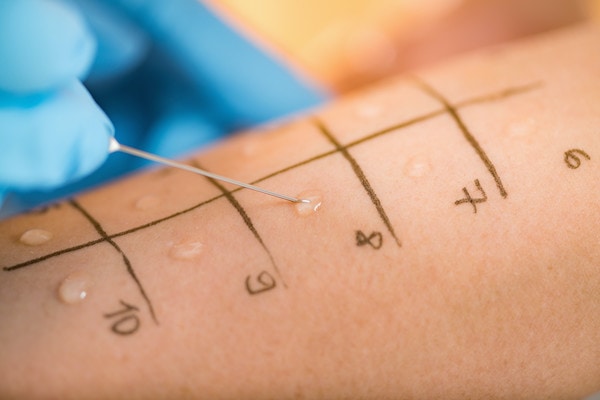USP Validation of Allergen Testing in Food Laboratories
The United States Pharmacopeia (USP) <575> is a critical standard for validating allergen testing methods used in food laboratories. This service ensures that the laboratory meets stringent requirements to accurately and reliably detect allergens, thereby safeguarding consumer health and compliance with regulatory standards.
The process of USP <575> validation involves a comprehensive approach that guarantees the precision and accuracy of allergen testing. This includes method selection, equipment qualification, sample preparation, data analysis, and reporting. Each step is crucial in ensuring that the laboratory can consistently deliver accurate results.
The primary goal of this service is to provide food manufacturers with assurance that their allergen testing methods are robust and compliant with USP <575>. This includes validating the method's ability to detect specific allergens, ensuring the equipment is suitable for the task, and verifying sample preparation protocols. The service also ensures that all data collected during testing are accurate and reliable.
The validation process begins with selecting an appropriate method based on the allergen of concern and the type of food matrix being analyzed. This selection must be done in accordance with USP <575> guidelines. The chosen method should have a detection limit that is suitable for the intended application, ensuring that it can reliably detect even trace amounts of allergens.
Once the method has been selected, the next step involves equipment qualification. This ensures that the instruments used in the testing process are capable of delivering accurate results. This includes calibrating the instruments to ensure they are operating within acceptable tolerances and verifying that they can produce consistent results over time.
The sample preparation protocol is also a critical component of USP <575> validation. Proper sample preparation ensures that the allergens are present in the matrix in a form that can be accurately detected by the chosen method. This may involve grinding, homogenizing, or other techniques to break down the food matrix and release the allergens.
Data analysis is another important step in the validation process. This involves using statistical methods to ensure that the data collected during testing are accurate and reliable. The analysis should include a range of samples, including those with varying levels of allergen contamination, to ensure the method can accurately detect allergens across different food matrices.
The final step in the USP <575> validation process is reporting. The results of the validation must be documented and reported in a manner that is clear, concise, and easy to understand. This includes providing detailed information about the method used, the equipment qualification process, sample preparation protocols, data analysis techniques, and any other relevant details.
The USP <575> validation of allergen testing in food laboratories is a crucial service that ensures the accuracy and reliability of allergen testing. This service is essential for food manufacturers who want to ensure their products are safe and comply with regulatory standards. By validating the method, equipment, sample preparation protocols, and data analysis techniques, this service provides assurance that the laboratory can consistently deliver accurate results.
Scope and Methodology
| Step | Description |
|---|---|
| Method Selection | Select appropriate method based on allergen type and food matrix, per USP <575>. |
| Equipment Qualification | Calibrate instruments to ensure accurate results, verify consistency over time. |
| Sample Preparation | Prepare samples to ensure allergens are in detectable form for chosen method. |
| Data Analysis | Analyze data using statistical methods to ensure accuracy and reliability. |
| Reporting | Document results clearly, concisely, and provide detailed information about validation process. |
Industry Applications
| Application | Description |
|---|---|
| FDA Compliance | Ensure food manufacturers are in compliance with regulatory standards. |
| Allergen-Free Certification | Verify that products do not contain allergens, ensuring safety for consumers. |
| Product Development | Support R&D efforts by providing accurate and reliable testing data. |
| Supply Chain Management | Assure quality throughout the supply chain, from raw materials to finished products. |
| Labeling Accuracy | Ensure that product labeling accurately reflects allergen content.|
| Risk Assessment | Identify potential risks associated with allergens in food products. |
| Customer Trust | Maintain customer trust by providing accurate and reliable testing results. |
Quality and Reliability Assurance
- Consistent method performance across different food matrices.
- Accurate detection of allergens at trace levels.
- Reproducible results that can be relied upon for regulatory compliance.
- Comprehensive documentation of the validation process, including all steps and parameters.





